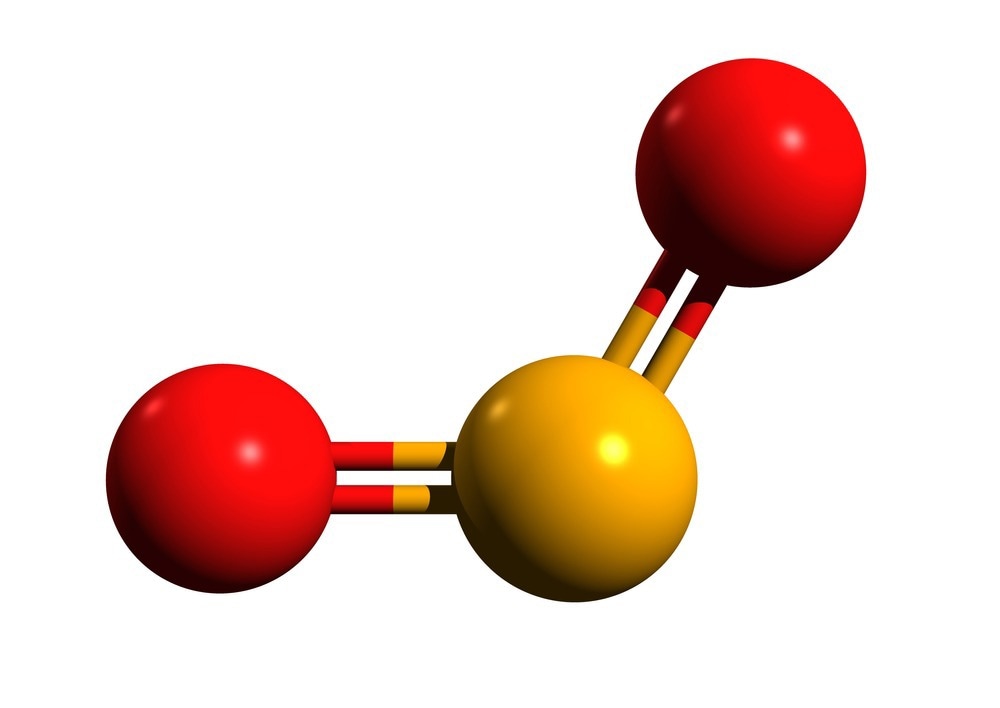In this article, we will explore the use of nanowires in NO2 sensing, explaining three noteworthy examples from recent research demonstrating why nanowires are particularly well-suited for this application.

Image Credit: Zita/Shutterstock.com
Why is NO2 Sensing Important?
The escalating pace of industrialization has led to a significant increase in the concentration of harmful gases in the environment, posing a serious concern. Among these gases, NO2 stands out as one of the prevalent air pollutants, posing a threat to human health even at concentrations exceeding 1 ppm. Moreover, detecting NO2 is imperative for maintaining a healthy environment.
NO2 sensing involves the detection of nitrogen dioxide gas in the surrounding environment. Traditional methods, such as chemoreceptive sensors and metal oxide sensors, have several limitations in terms of sensitivity, selectivity and response time. Nanowires, due to their promising properties, such as surface-to-volume ratio and tuneable electronic properties, offer advantages for enhancing the performance of NO2 sensors.1
Advantages of Nanowires in NO2 Sensing
High Surface-to-Volume Ratio
Nanowires possess an exceptionally high surface-to-volume ratio compared to bulk materials. This unique characteristic allows for a greater number of active sites available for gas adsorption, resulting in enhanced sensitivity to NO2 molecules. The increased surface area facilitates improved interaction between the nanowires and the target gas, leading to more accurate and rapid detection.2
Tuneable Electronic Properties
The electronic properties of nanowires can be tuned by adjusting their composition, dimensions, and doping. This tunability enables the optimization of the sensor's response to specific gas molecules like NO2. Researchers have leveraged this characteristic to create nanowire-based sensors with enhanced selectivity, minimizing interference from other gases commonly present in the environment.3
Quick Response and Recovery Times
Nanowire-based NO2 sensors exhibit rapid response and recovery times, a critical factor in real-time environmental monitoring. The high mobility of charge carriers in nanowires allows for fast and reversible interactions with NO2 molecules, ensuring that the sensor can quickly detect changes in gas concentration and return to its initial state after exposure.1
Examples of Nanowire-Based NO2 Sensors
Zinc Oxide (ZnO) Nanowires
Over the past decade, ZnO nanowires (NWs) have garnered considerable attention due to their diverse and outstanding physical properties for potential applications in various emerging fields such as low-voltage and short-wavelength optoelectronics, photonics, actuators, and solar.
Moreover, due to its quasi one-dimensional (1-D) structures, which manifest quantum confinement effects and high surface-to-volume ratios, it makes a promising agent for sensing properties. Thus, Researchers have demonstrated the effectiveness of ZnO nanowires in NO2 sensing.
The unique semiconducting properties of ZnO, combined with the high surface-to-volume ratio of nanowires, result in a highly sensitive and selective sensor. The ZnO nanowire sensors have shown promising results in terms of detection limits and response times.2
Tin Dioxide (SnO2) Nanowires
SnO2 nanowires have been extensively studied for NO2 sensing applications. The sensitivity of SnO2 nanowires to NO2 can be tailored by controlling the synthesis parameters. These sensors exhibit excellent performance in terms of sensitivity, stability, and repeatability, making them suitable for practical environmental monitoring applications.3
Indium Oxide (In2O3) Nanowires
In2O3 nanowires have also emerged as effective materials for NO2 sensing as they show better selectivity towards NO2 and less interference than other gases. The reason behind that is when a NO2 molecule is adsorbed on the sensor surface, it tends to generate species such as In–O–NO, constituting an electron-capture process.
In contrast, when reducing gases (such as CH4, H2, NH3, C2H5OH, etc.) react with the adsorbed oxygen on the sensor surface. These lead to reducing gases (like CH4, H2, NH3, C2H5OH, etc.), which adsorb or react on the sensor surface, making the changes in resistance positive (resistance increases) for oxidizing gases and negative (resistance decreases) for reducing gases.
Hence, a response curve for sensing NO2 has been obtained. This interesting property of In2O3 nanowires denotes that the sensor is quite selective to NO2 without interference from other common reducing gases.4
Moreover, the high electron mobility of In2O3 nanowires, coupled with their unique morphology, contributes to the high sensitivity and low detection limits of the sensors. Researchers have explored various fabrication techniques to optimize the performance of In2O3 nanowire-based NO2 sensors.
Conclusion
Nanowires have revolutionized the field of NO2 sensing, offering enhanced sensitivity, selectivity, and response times compared to traditional sensing technologies. The examples discussed in this article highlight the versatility and effectiveness of nanowire-based sensors in detecting nitrogen dioxide.
As research in this field continues to advance, nanowire-based NO2 sensors hold great promise for applications in environmental monitoring, public health, and industrial safety.
References and Further Reading
Shen, Y. et al. (2023). Rapid and Efficient NO2 Sensing Performance of TeO2 Nanowires. Sensors, 23, p. 9097.
Cui, J. (2012). Zinc oxide nanowires. Materials Characterization, 64, pp. 43–52.
Budak, S., et al. (2006). Growth and characterization of single crystalline tin oxide (SnO2) nanowires. Journal of Crystal Growth, 291, pp. 405–411.
Xu, P. et al. (2008). High aspect ratio In2O3 nanowires: Synthesis, mechanism and NO2 gas-sensing properties. Sensors & Actuators, B: Chemical, 130, pp. 802–808.
Disclaimer: The views expressed here are those of the author expressed in their private capacity and do not necessarily represent the views of AZoM.com Limited T/A AZoNetwork the owner and operator of this website. This disclaimer forms part of the Terms and conditions of use of this website.